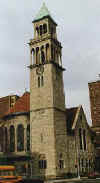 |
New York
Architecture Images-Upper West Side St. Michael’s Church (Episc) |
|
architect |
Robert W. Gibson |
|
location |
225 West 99th Street, at Amsterdam Ave. |
|
date |
1891 |
|
style |
Northern Italian renaissance or Romanesque-Byzantine style |
|
construction |
Indiana limestone |
|
type |
Church |
|
|
|
|
images |
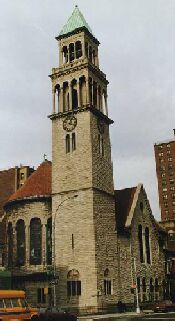 |
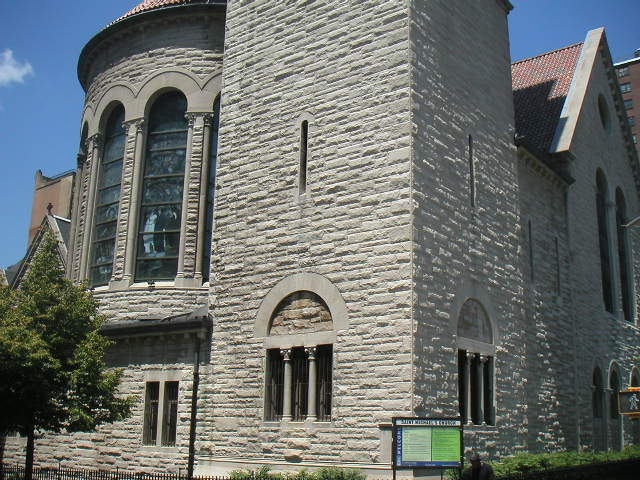 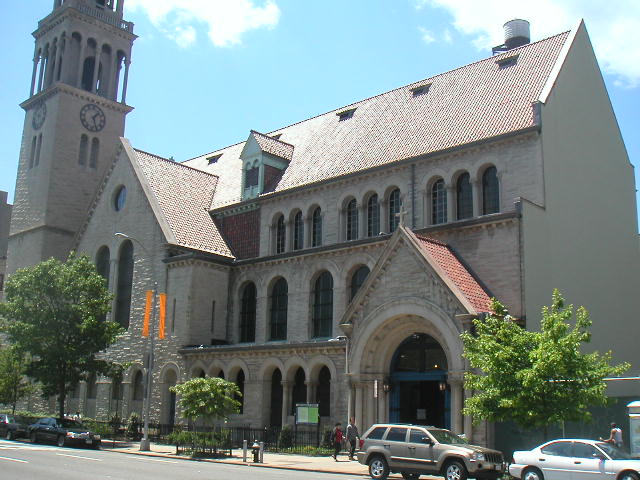 |
|
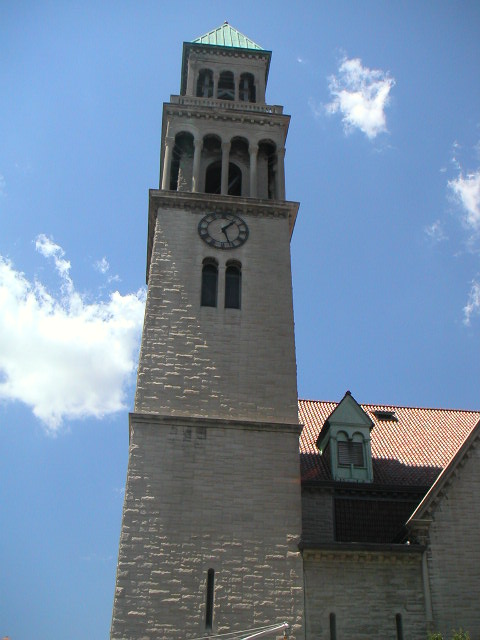  |
|
|
Architecture
The current church building is the third on this site. It was designed by architect Robert W. Gibson and completed in 1891. It is made of Indiana limestone in the Northern Italian renaissance or Romanesque-Byzantine style and provides a rich setting for worship. The style was a daring departure in church architecture at the time. The new church was enhanced with chancel decorations by Louis Comfort Tiffany, which include the impressive lancet windows in the apse, depicting St. Michael's victory in heaven. The church was dedicated on December 16, 1891. The parish house of the same style was completed in 1902. This building was designed for community service and originally contained facilities for a school, laundry and kitchen. The interior of the church was painted with brilliant colors in 1990 by Fine Art Decoration of New York. For most of its first 100 years, the sanctuary had been painted in neutral colors. In celebration of its centennial, the church was repainted using colors in the palette of the Tiffany decorations. This decoration has suffered extensive water damage in the last several years. The exterior of the building has now been repointed and the roof replaced. The church will be restoring the interior painting to its former glory in the near future. The church is currently undertaking a $500,000 Campaign for Restoration and Renewal to restore the art and architecture. If you would like more information or would like to contribute, please contact the church office at (212) 222-2700. History of St. Michael's Church St. Michael's Church was founded as a summer church on its present site in 1807 in the community of Bloomingdale by New York City residents who lived "in town" five miles to the south. What is now the northern end of the Upper West Side was then a patchwork of farms and country homes. In 1854 the second church was consecrated - a Gothic structure, built of oak.
The current church building was dedicated on December 16, 1891. The parish house was completed in 1902. This building was designed for community service and originally contained facilities for a school, laundry and kitchen. As the city grew around in the latter half of the 19th century, St. Michael's mission became more and more local in aspect. The needs were great in the immediate precincts of the church. The Parish House, built in the last decade of the century, included facilities for education, industrial skills education, a family clinic; library, gym and child care center. From 1907 to 1957 St. Michael's Church maintained a "colored" mission chapel on 99th Street, dedicated to St. Jude. The parish remained strong well into the 20th century, although after World War II many parishioners left the neighborhood and membership declined. A renaissance began in 1976, under the leadership of Reverend Frederick Hill, and continues today as the parish moves into the 21st century with its tenth rector, Canon George W. Brandt, who was called in 1994. Art St.
Michael's church contains many fine works of art, including some of the
most important ecclesiastical works of
Tiffany Glass Studios founded by Louis Comfort Tiffany. The interior
decorations by Tiffany and others were added in stages after the
completion of the current church building in 1891.
Click to see all seven lancet windows together! The Campaign for Restoration and Renewal In December of 1998 the Rev. Canon George W. Brandt called upon all parishioners of St. Michael's Church to dedicate themselves to a dual mission: the restoration of the deteriorated interior decoration of the sanctuary; and more urgently, the restoration and protection from further environmental degradation of the seven priceless Tiffany stained glass windows depicting "St. Michael's Victory in Heaven", located in the apse of the church. These
historically and aesthetically important Tiffany windows are part of a
larger collection of ecclesiastical decorations designed by Tiffany
Glass Studios - decorations which to this day form one of the largest
Tiffany installations still intact in its original setting. This legacy
left by previous generations of St. Michael's parishioners to
present-day and future St. Michael's worshippers, as well as to the
greater community, constitutes both a tremendous gift and a great
responsibility. Therefore, there is an enormous task to be accomplished
in the years ahead for this and for future generations of St. Michael's
parishioners, and for all those who treasure the works of Louis Comfort
Tiffany and value their place and preservation within the fabric of
historic churches and their neighborhoods.
To
achieve these four goals, the Committee has embarked on a comprehensive
program of parish and public education, as well as fundraising within
and outside the parish. St. Michael's Church Walter Cain - Co-Chair,
Restoration Committee |
|
|
links |
|